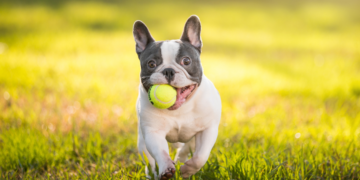The Power of Positive Reinforcement: Understanding and Influencing Your Dog’s Behavior
Introduction
Dogs are known to be man’s best friend, but sometimes their behavior can be challenging. Understanding how to influence your dog’s behavior using positive reinforcement techniques can help strengthen the bond between you and your furry friend. Positive reinforcement is a powerful tool that can be used to encourage desired behaviors and discourage unwanted ones in a gentle and effective way.
What is Positive Reinforcement?
Positive reinforcement involves rewarding your dog for exhibiting a desired behavior. This can be done using treats, praise, toys, or other rewards that your dog finds motivating. When your dog performs the desired behavior, you give them the reward immediately to reinforce the behavior and increase the likelihood that they will repeat it in the future.
For example, if you are teaching your dog to sit, you can give them a treat when they sit down on command. This positive experience will make them more likely to sit when you give the command in the future.
Why Positive Reinforcement Works
Positive reinforcement works because it creates a positive association between the behavior and the reward. Dogs are motivated by rewards and seek to repeat behaviors that result in positive outcomes. By consistently rewarding desired behaviors, you can shape your dog’s behavior in a way that is both effective and humane.
Positive reinforcement also helps build trust and strengthen the bond between you and your dog. When your dog learns that good behavior results in rewards, they will be more likely to listen to you and follow your commands willingly.
How to Use Positive Reinforcement
When using positive reinforcement to influence your dog’s behavior, it is important to be consistent and patient. Here are a few tips to help you effectively use positive reinforcement:
- Identify the desired behavior: Before you can reinforce a behavior, you need to clearly identify what it is that you want your dog to do. This could be anything from sitting on command to walking politely on a leash.
- Choose a reward: Find out what motivates your dog and use that as a reward. This could be treats, praise, toys, or a combination of these things.
- Timing is key: Make sure to give the reward immediately after your dog exhibits the desired behavior. This helps them make the connection between the behavior and the reward.
- Be consistent: Consistency is key when using positive reinforcement. Make sure to reward your dog every time they perform the desired behavior to reinforce it.
- Don’t punish bad behavior: Instead of focusing on punishing bad behavior, redirect your dog’s attention to a desired behavior and reward them for that instead.
Common Questions About Positive Reinforcement
Can positive reinforcement be used to correct bad behavior?
Yes, positive reinforcement can be used to correct bad behavior in dogs. Instead of focusing on punishing the bad behavior, you can use positive reinforcement to redirect your dog’s attention to a more desirable behavior and reward them for that. This helps to discourage the unwanted behavior while encouraging a more positive one.
How long does it take for positive reinforcement to work?
The time it takes for positive reinforcement to work can vary depending on the individual dog and the behavior you are trying to influence. Some dogs may pick up on new behaviors quickly, while others may take more time. Consistency and patience are key when using positive reinforcement, so be prepared to work with your dog over a period of time to see results.
Are there any situations where positive reinforcement may not be effective?
While positive reinforcement is a powerful tool for influencing behavior, there may be some situations where it is not the most effective approach. For example, if your dog is exhibiting aggressive behavior, it may be best to seek the help of a professional trainer who can provide guidance on how to address the issue effectively.
Conclusion
Positive reinforcement is a valuable tool for influencing your dog’s behavior in a gentle and effective way. By rewarding desired behaviors and building a positive association with them, you can encourage your dog to listen to you and follow your commands willingly. Consistency, patience, and a deep understanding of your dog’s motivations are key to successfully using positive reinforcement to shape your dog’s behavior in a positive direction.
Remember that every dog is unique, so it may take some trial and error to find the right rewards and techniques that work best for your furry friend. With time and dedication, you can use positive reinforcement to strengthen the bond between you and your dog and create a harmonious relationship built on trust and respect.
Start incorporating positive reinforcement into your training routine today and watch as your dog’s behavior improves and your bond grows stronger than ever before.














































